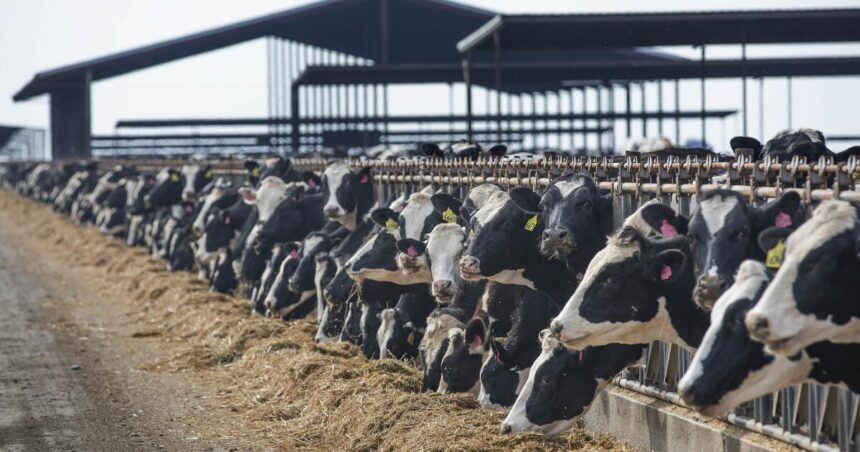The number of California dairy farms reporting outbreaks of H5N1 avian influenza has risen to eight.
Officials have declined to say where the infected herd is located but have said it is somewhere nearby in California’s Central Valley, an 18,000-square-mile region roughly the size of Vermont and New Hampshire combined.
The source of the virus is still under investigation, but federal officials said at a press conference Thursday that genetic sequencing of the first three cases suggests the strain is similar to those seen in other states. Wild birds or animals do not appear to be the source, officials said.
“This is the same virus that has been detected in dairy herds since H5N1 first began appearing in dairy cattle,” said Eric Deeble, USDA’s assistant secretary for marketing and regulatory programs. “Genetic sequencing of samples from the five additional facilities will likely be completed later this week or over the weekend.”
He said the California Department of Food and Agriculture “has been doing a very thorough follow-up investigation and every single cluster that has been detected in California to date has been investigated.”
Since the first case was reported in March, 201 cattle in 14 states have been infected with the virus.
State officials continue to reassure the public that the risk to the general population is low and that pasteurized milk and dairy products are safe for human consumption.
Deeble said the Ministry of Health is in the process of approving a local safety study of the H5N1 cattle vaccine.
An agency spokesman said the development of the vaccine does not suggest that the biosecurity procedures followed by the Department of Agriculture and state governments have failed, nor does it mean the virus will continue to be present.
“Vaccine development is part of a comprehensive strategy that includes enhanced biosecurity efforts to contain the virus and mitigate its spread,” USDA spokesman Will Clement said.
“A bovine vaccine may ultimately be an important tool in eliminating the virus from the nation’s dairy herds, but vaccine development requires many steps and an effective vaccine will take time to test, approve and distribute,” he said. “That’s why we’ve paved the way for local testing of the vaccine while continuing to prioritize biosecurity and do everything possible, including mandating testing of dairy cattle that move across state borders.”
Additionally, federal health officials say they have not yet been able to fully sequence the H5N1 sample isolated from the human case in Missouri, who has no known contact with dairy products or poultry, and preliminary investigations have not identified a source of infection.
There have been no reported cases of infection in dairy cows in Missouri.
“Right now, the evidence suggests this is a one-off,” said Nirav Shah, principal deputy director at the Centers for Disease Control and Prevention.
Shah said the patient, who was hospitalized with flu-like symptoms and then recovered, had only a tiny amount of virus circulating in his body, making genetic analysis difficult.
Authorities can say with certainty that the virus is of the H5 subtype, but have not been able to sequence the N portion.
However, the H5 portion appears to be similar to the H5 subtype from infected dairy cows.
“We are doing our best, but ultimately it may not be technically possible to fully sequence it due to the low concentration of viral RNA,” Shah said.









